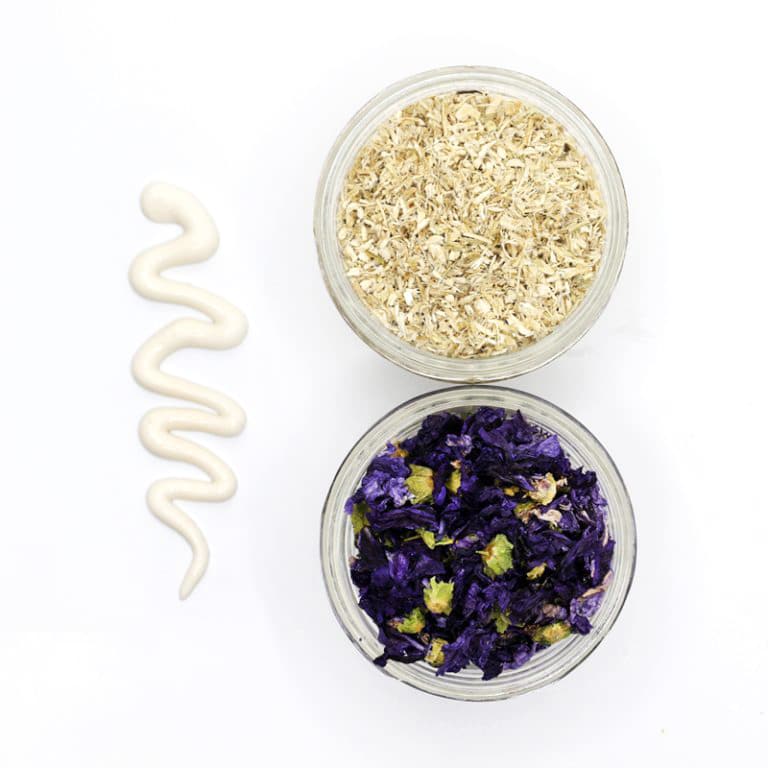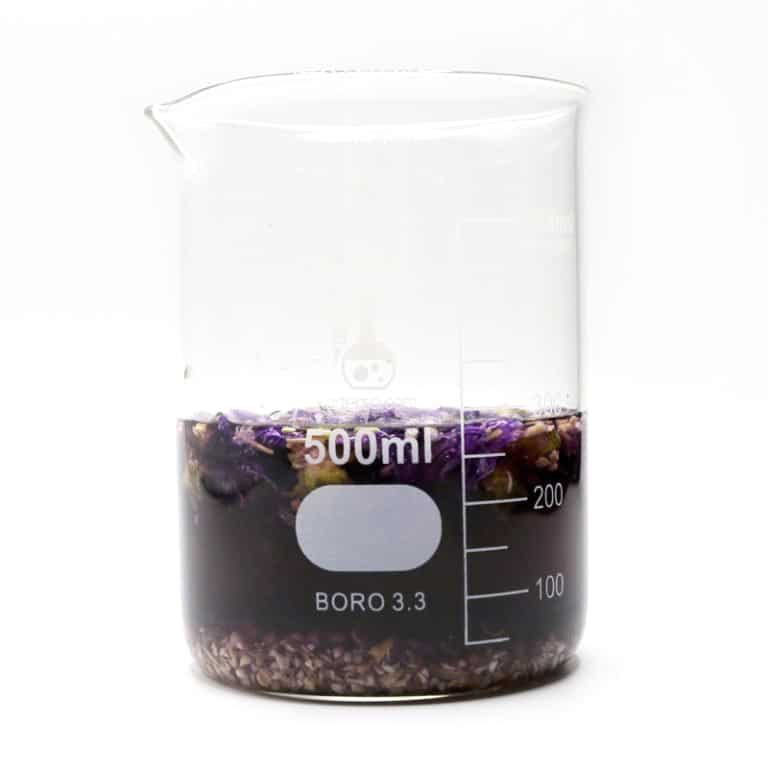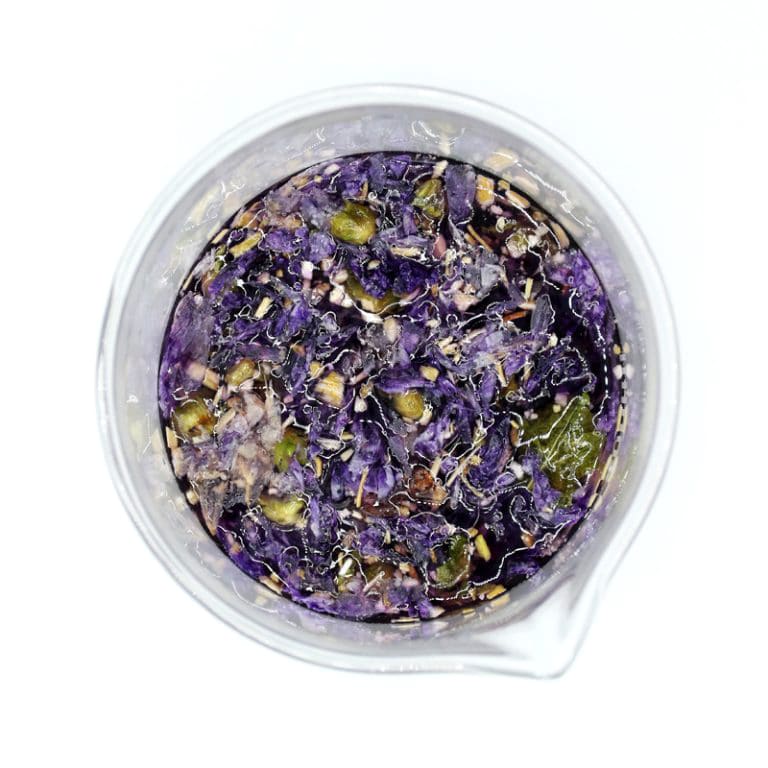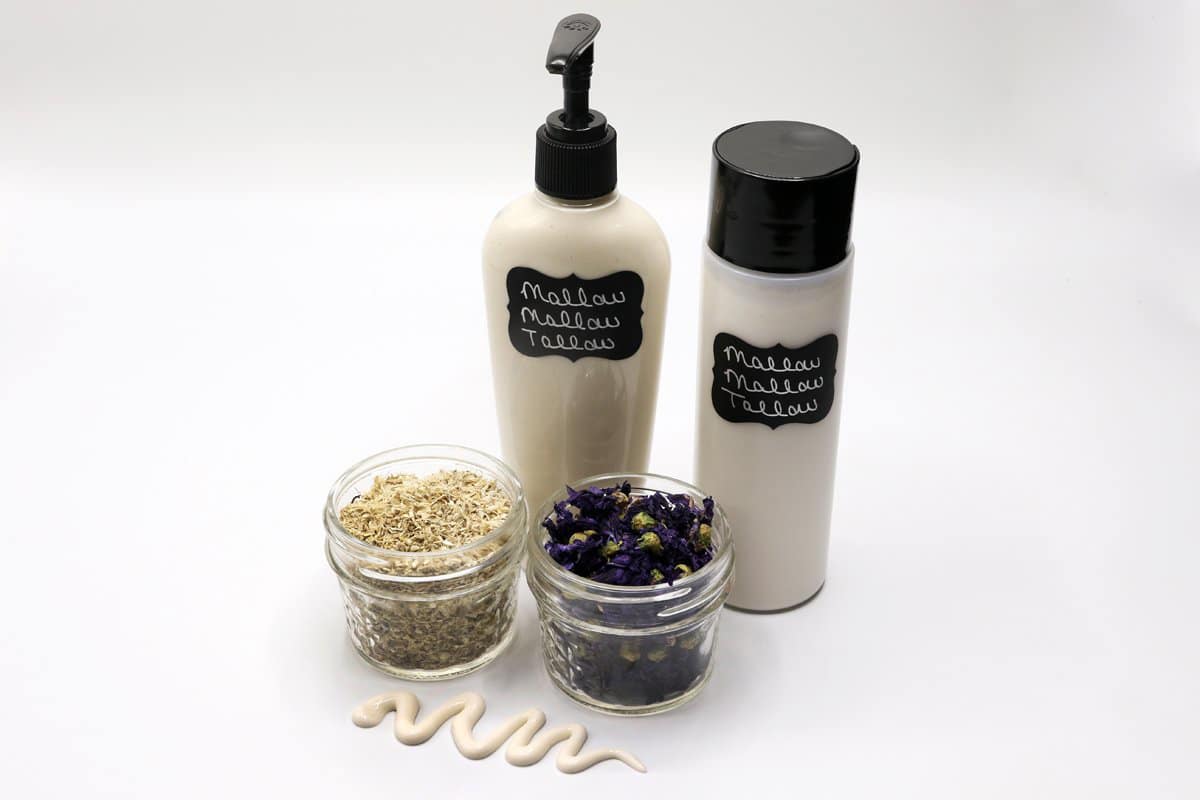The inspiration for this recipe came from its name. Say it with me: Mallow mallow tallow. Now a little faster:
mallow mallow tallow
mallowmallowtallow
It’s just so much fun to say out loud! ♥
In addition to marshmallow and blue mallow, the Malvaceae family (aka the mallows) also includes a number of familiar plants such as the hibiscus, cotton, okra and cacao.

Mallow mallow
I’ve written quite a bit about the benefits of my favorite demulcent herb, the marshmallow root (Althaea officinalis) here and here. Infusion of the root in water results in an amazingly soothing, restorative mucilage that I use just about everyday in one form or another, be it topically and/or internally. It makes a wonderful tea that’s healing to the digestive tract and capable of soothing a scratchy, sore throat in a jiffy.
Like its marsh-y cousin, the buds and leaves of blue mallow, aka common mallow (Malva sylvestris) is considered to be a cooling, mucilaginous herb. Both herbs’ constituents include mucilage, pectin and flavonoids, and their mildly astringent, skin softening properties make them great choices for soothing to dry, rough skin. Their flavonoids are effective at reducing inflammation and relieving skin conditions like eczema and dermatitis.
The blue mallow will tint the water infusion a lovely deep purple, but I was disappointed that it wasn’t enough pigment to show up in the final emulsion. As you can see in the photos above and below, the lotion is pretty much white, despite the deep purple tinted water phase. Boo.
If you’d like a bit of color, you can keep it in the family and use a pinch of hibiscus flowers in the infusion to tint the lotion a pale pink. Alternatively, a smidge of butterfly pea flowers will create a lovely lavender-blue color.
To extract the mucilage from the marshmallow root and mallow flowers, you’ll need to do an overnight cold water infusion. Refer to Herbal Water Infusions for a refresher on how to do a cold water infusion.

Emulsifiers
Emulsifiers are still a work in progress for me. I’d prefer to use something simple, natural and accessible – like lecithin and xanthan gum — for everything, but sometimes the textures of these emulsions don’t quite suit the project.

I’ve had good luck with lecithin in thinner lotions and serums with a lower oil content, but thicker lotions are trickier, and tend to require a co-emulsifier or thickener to boost lecithin’s weaker emulsifying powers. A lot of organic lotion brands use a combo of xanthan gum and lecithin, but I’m not a fan of the slight stickiness xanthan leaves behind on the skin. I haven’t tried a lecithin/sclerotium gum blend yet, so that may need to be a future experiment.
For now, I’m using a vegetable-based emulsifying wax (e-wax) from Mountain Rose Herbs that works wonderfully well. According to MRH, their emulsifying wax is a “fatty acid and ester isolation from plant fats prepared from cetostearyl alcohol containing a polyoxyethylene derivative of a fatty acid ester of sorbitan.”
Update! I’ve ordered a sample of a new “green” emulsifier I stumbled across: Organic Emulsifier Blend 60. According to Formulator Sample Shop, Organic Emulsifier Blend 60 is an intriguing blend of rice bran extract and guar gum. Supposedly, the emulsifiers works by harnessing rice bran’s lipase, an enzyme that hydrolyzes lipids into free fatty acids. Stay tuned!

Mallow Mallow Tallow Lotion
5 Stars 4 Stars 3 Stars 2 Stars 1 Star
No reviews
Ingredients
Phase A:
150 g distilled water
1 T marshmallow root
pinch of hibiscus flowers (optional for color)
Phase B:
38 g tallow
16 g jojoba oil
8 g squalene
8 g emulsifying wax
Phase C:
2.2 g Geogard ECT at 1% (or preservative of choice at the recommended usage rate)
5 drops essential oil
Instructions
- In a pint mason jar, combine marshmallow root, blue mallow flowers and optional hibiscus/butterfly pea flowers with 150 grams of room temperature distilled water. A tea infuser basket or disposable tea bag works well. Cover and allow herbs to steep for a minimum of 4 hours up to overnight for maximum extraction. Note: If you did not suspend your herbs in a tea basket or tea bag, you will need to remember to shake the jar every so often. (read about the Principle of Circulatory Displacement)
- Strain out the herbs, squeezing as much liquid and mucilage out of the herb pulp as possible. The discarded herbs can be used as a poultice on dry or inflamed skin or composted.
- Double check the weight of your mallow-infused water. Top up with additional distilled water until you have 150 grams of liquid again.
- In a separate heat-proof bowl or jar, warm tallow and emulsifying wax over a gentle heat source until fully melted. Stir in jojoba and squalane oils.
- Place an immersion blender in the jar containing your mallow water infusion and turn it on. While running the blender, slowly drizzle heated oil phase into the water phase. Continue mixing until well emulsified and smooth. (You can also use a regular blender or personal blender)
- Add preservative and any essential oil(s), blending once more until fully incorporated.
- The lotion will continue to thicken slightly for an hour or two before it reaches its final viscosity. ♥
Notes
Make about 8 ounces of lotion.
If you choose not to use a broad spectrum preservative, you must store lotion in the refrigerator and use within a few weeks.
I recommend glass containers for storing homemade lotions and potions. Glass doesn’t leach chemicals and it’s easier to clean/sterilize after the product is used up and you’re ready to refill.



